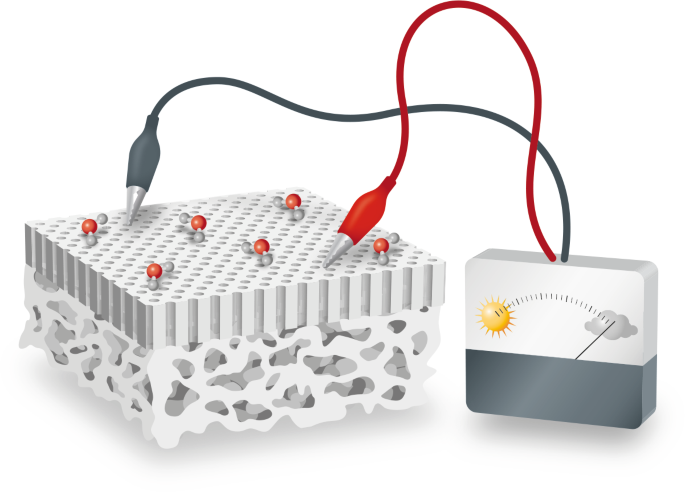
Pores for effect | Nature Reviews Chemistry
- Select a language for the TTS:
- UK English Female
- UK English Male
- US English Female
- US English Male
- Australian Female
- Australian Male
- Language selected: (auto detect) - EN
Play all audios:
Access through your institution Buy or subscribe The team had earlier developed a method for manufacturing isoporous films based on block copolymer self-assembly, an approach they extended
and optimized to incorporate CNTs. “The critical challenge was to preserve the isoporous morphology of these hybrid films,” says team member Rahul Shevate. The process is simple: CNTs are
first dispersed in DMF/THF/1,4-dioxane, after which PS-_b_-P4VP is dissolved in the mixture; this solution is then partially evaporated on a glass surface before being immersed in water,
leading to precipitation of the composite. Scanning electron microscope and atomic force microscope images of the resulting films show ordered patterns of 20 nm pores — an ideal morphology
for humidity sensing. In addition, the self-assembly process causes the pores to be lined by the hydrophilic P4VP blocks in PS-_b_-P4VP. “This should lead to fast sorption and desorption of
H2O when exposed to changes in humidity,” says Peinemann. Transmission electron micrographs of the films also show that the CNTs are dispersed, which the team attributes to stabilizing
interactions between P4VP and the CNT sidewalls, both in the form of _π_–_π_ interactions and interactions involving N valence lone pairs. Raman spectra of the composite feature a radial
breathing band and a G band, consistent with the CNTs retaining their electronic properties when embedded in the film. > The critical challenge was to preserve the isoporous morphology of
> these hybrid films This is a preview of subscription content, access via your institution ACCESS OPTIONS Access through your institution Access Nature and 54 other Nature Portfolio
journals Get Nature+, our best-value online-access subscription $32.99 / 30 days cancel any time Learn more Subscribe to this journal Receive 12 digital issues and online access to articles
$119.00 per year only $9.92 per issue Learn more Buy this article * Purchase on SpringerLink * Instant access to full article PDF Buy now Prices may be subject to local taxes which are
calculated during checkout ADDITIONAL ACCESS OPTIONS: * Log in * Learn about institutional subscriptions * Read our FAQs * Contact customer support REFERENCES ORIGINAL ARTICLE * Shevate, R.
et al. Embedding 1D conducting channels into 3D isoporous polymer films for high performance humidity sensing. _Angew. Chem. Int. Ed._ https://doi.org/10.1002/anie.201804656 (2018) Article
Google Scholar Download references AUTHOR INFORMATION AUTHORS AND AFFILIATIONS * Associate Editor, Nature Reviews Physics http://www.nature.com/natrevphys/ Zoe Budrikis Authors * Zoe
Budrikis View author publications You can also search for this author inPubMed Google Scholar CORRESPONDING AUTHOR Correspondence to Zoe Budrikis. RIGHTS AND PERMISSIONS Reprints and
permissions ABOUT THIS ARTICLE CITE THIS ARTICLE Budrikis, Z. Pores for effect. _Nat Rev Chem_ 2, 146 (2018). https://doi.org/10.1038/s41570-018-0027-5 Download citation * Published: 26 July
2018 * Issue Date: August 2018 * DOI: https://doi.org/10.1038/s41570-018-0027-5 SHARE THIS ARTICLE Anyone you share the following link with will be able to read this content: Get shareable
link Sorry, a shareable link is not currently available for this article. Copy to clipboard Provided by the Springer Nature SharedIt content-sharing initiative